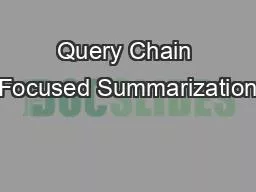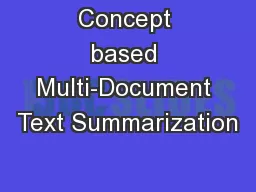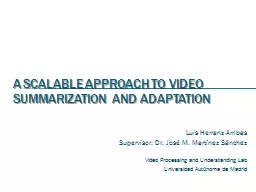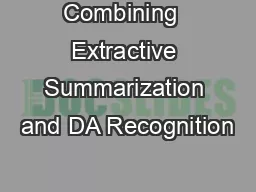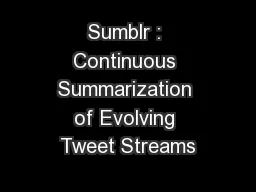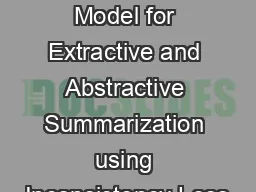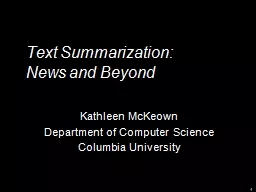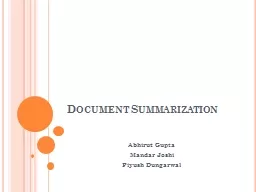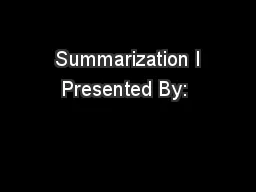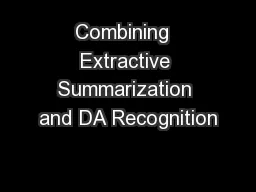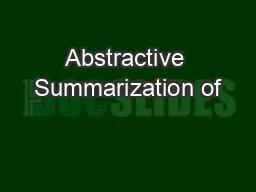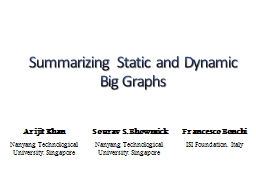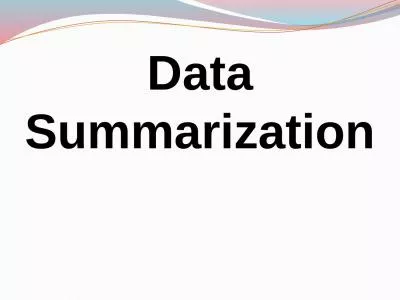PPT-Query Chain Focused Summarization
Author : nephewhers | Published Date : 2020-07-01
Tal Baumel Rafi Cohen Michael Elhadad Jan 2014 Generic Summarization Generic Extractive Multidoc Summarization Given a set of documents Di Identify a set of sentences
Presentation Embed Code
Download Presentation
Download Presentation The PPT/PDF document "Query Chain Focused Summarization" is the property of its rightful owner. Permission is granted to download and print the materials on this website for personal, non-commercial use only, and to display it on your personal computer provided you do not modify the materials and that you retain all copyright notices contained in the materials. By downloading content from our website, you accept the terms of this agreement.
Query Chain Focused Summarization: Transcript
Download Rules Of Document
"Query Chain Focused Summarization"The content belongs to its owner. You may download and print it for personal use, without modification, and keep all copyright notices. By downloading, you agree to these terms.
Related Documents

